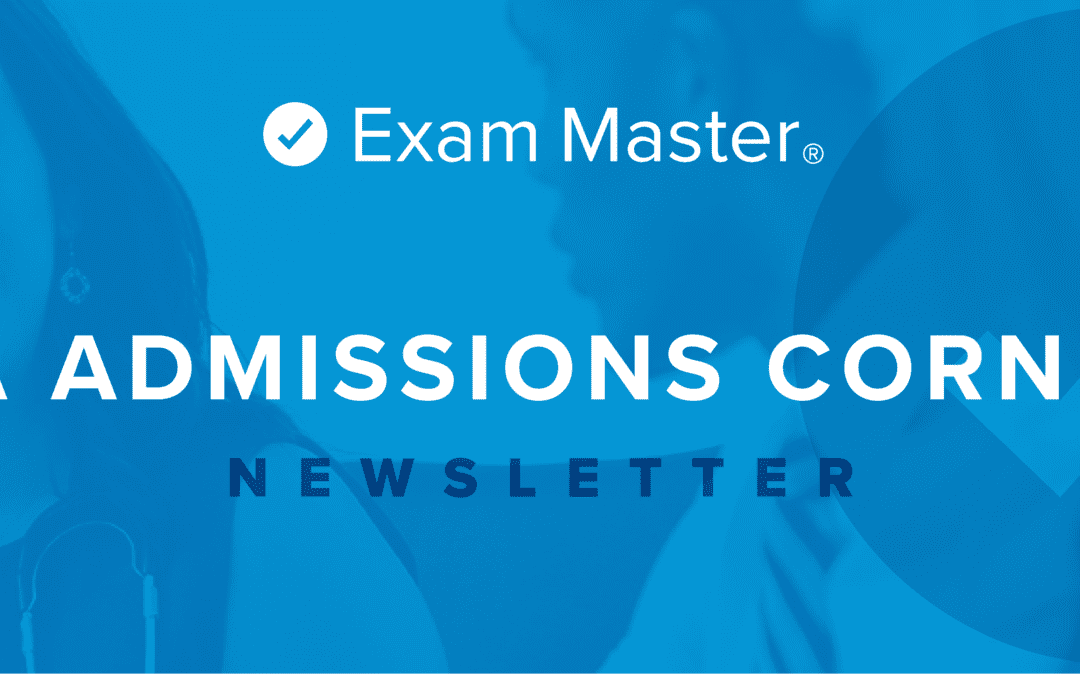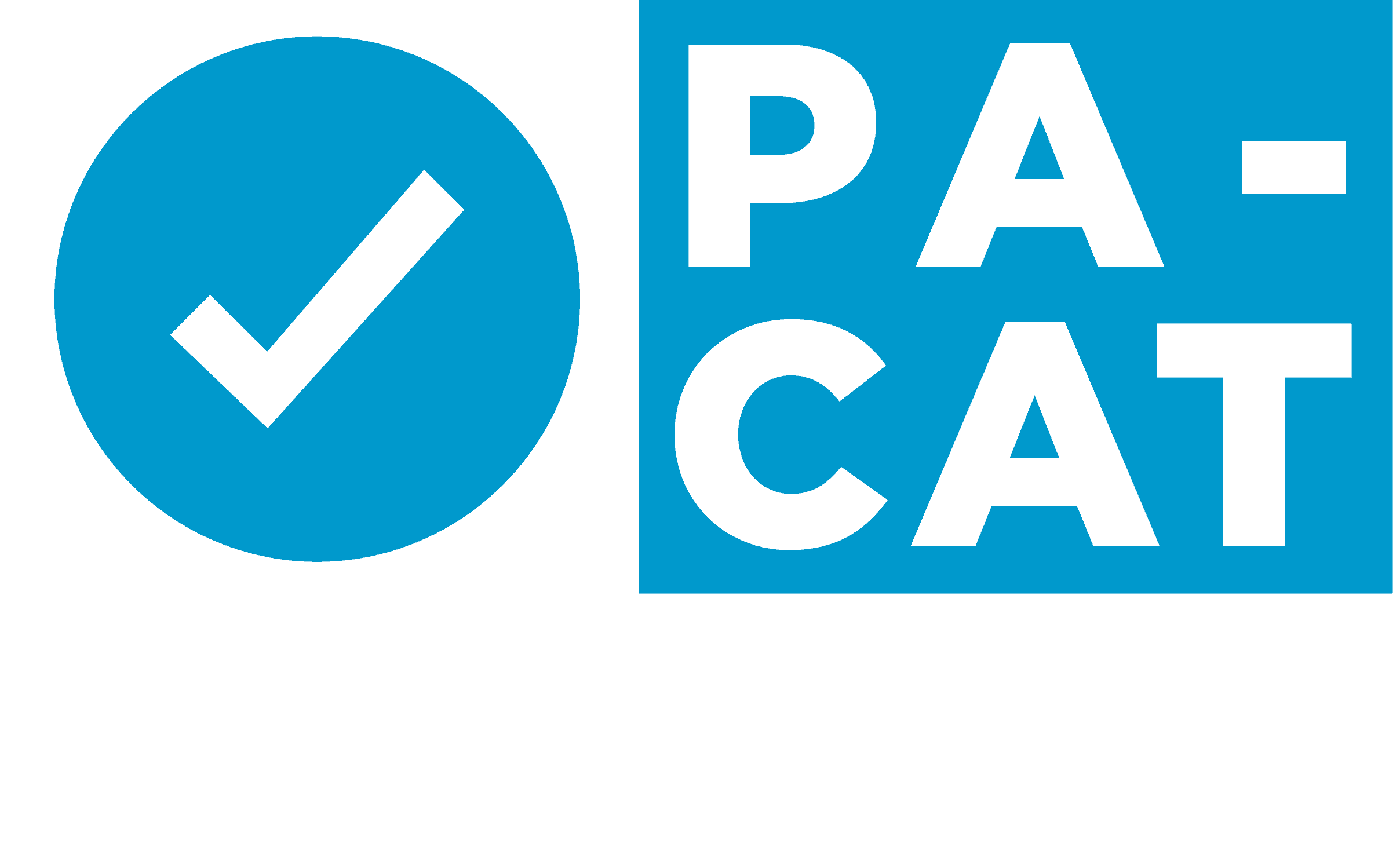
Successful PA Admissions Part 5: Common Questions
ISSUE 21
Successful PA Admissions Part 5: Common Questions
By Jim Pearson and Dr. Scott Massey
Welcome back to PA Admissions Corner. In today’s Issue, we’ll complete our five-part series on Successful PA Admissions by addressing some of the most frequently asked questions regarding interviewing, pre-screening, diversification, and inclusion.
Question: How can we improve our interview process with a small staff of interviewers?
PA programs are often under-resourced in terms of staff members dedicated to admissions activities. Sometimes you need to be creative and highly strategic about operationalizing an admissions process involving a smaller number of team members. Here are some ways to bolster your admissions team that have been used successfully in the past and involve less budgetary impact than another staff member.
- Recruit alumni to be interviewers. Your own alumni can be among the most dedicated to maintaining your cohort quality. With most people available through some form of video conference, your alumni can help from wherever they happen to live. With some standardized training, you can reduce the workload of interviewing from your existing principal faculty. The key challenge is achieving uniformity among reviewers. Using an established comprehensive approach like behavioral interviewing will reduce variance between your reviewers. Small stipends for alumni may be necessary to compensate them for their time.
- Recruit students on interview day. Existing students are very invested in their program’s future. They can be highly effective in showing prospects from the information session to the interview suite. They can answer applicant questions between specific interview phases. Students should be encouraged to list this volunteer experience on their CV. It demonstrates leadership and initiative.
- Train faculty members outside of the PA program to interview applicants. The basic science faculty can be valuable contributors in selecting the highest quality applicants. Not every interview has to be conducted by a PA faculty member.
- Empower your staff to create a highly organized machine on interview day. The ability to interview 20 students in one day takes a highly organized logistical process. Allow the staff members to take charge and ensure that all the pieces come together.
Using these methods can significantly reduce the burden on smaller faculty sizes to help improve interview processes and outcomes.
Question: How can we improve our pre-admittance screening process to identify and avoid applicants with problematic behavior?
Every PA educator will ask this question. How can I prevent admitting students who display serious behavioral issues from the moment they matriculate? Many policies that evolved over the years could be named for a specific student based on loopholes they found in the system. Fortunately, the number of students in this category is historically small. There are some specific traits that will help identify problematic applicants at the crucial time: before admittance. This is one of the reasons we created the PA Applicant Pre-Enrollment Risk Scoring Model to provide information about specific risk factors to look for in your applicants.
Recall any students with severe behavioral issues that you have contended with in your career. Ask yourself if the student demonstrated any warning signs during the admissions process. Reflect on whether applicants with extremely high academic profiles have been admitted to your program despite limited insights about character and behavior.
Here are a few observable traits that should give you pause when making the final decision to offer applicants a seat in your PA program.
- Applicant dressed casually to the interview. If an applicant doesn’t understand the implications of dressing in business attire to the most important interview of their life so far, there could be reason to believe that there will be issues involving professionalism.
- Applicant exhibited rude behavior on campus. If an applicant exhibits rude behavior toward other students or staff members while on campus, or the applicant attended your affiliated undergraduate institution and has a history rude behavior, such behavior will not change in the PA program.
- Applicant was antagonistic toward other students during the group interview. There are anecdotal examples of applicants who exhibited aggression during the group interview who were subsequently admitted to the program and became a behavioral nightmare. This can signal a confrontational personality and lack of maturity.
- The faculty experienced a gut feeling that the applicant should not be admitted. We cannot underscore the importance of listening to intuition. Some of the worst student ordeals in our experience were admitted despite misgivings from the interviewing faculty. There is a reason for intuitive impulses, and sometimes they can be a precursor to avoidable behavioral problems.
- Applicant has a history of harassing phone calls to the admissions coordinator. Excessive phone calls exhibiting aggressive behavior is an extreme warning sign of behavioral issues. This is reason enough not to admit the student.
Question: We want more diversity in our PA classes, but we don’t know where to begin. How can we improve our mission-based outcomes in our admissions selection process?
If you want to improve your mission-based outcome involving your admissions selection process, start by using fair practice language on your website. Below is an example of a program that informs prospective students that populations defined by HRSA will be given preference in the admissions process.
“The Department will admit qualified applicants to matriculate through the MPAS curriculum of study. Applicants from Health Personnel Shortage Areas (HPSA) https://data.hrsa.gov/tools/shortage-area/hpsa-find or Medically Underserved Areas/Populations (MUA/P) https://data.hrsa.gov/tools/shortage-area/mua-find and groups and/or racial/ethnic populations underrepresented within the physician assistant profession are encouraged to apply and will receive preference.”
Look at your own programmatic goals or mission statement to determine if diversity and inclusion is mentioned in the first place. Remember that prospective students will look at your admissions materials and mission statement to see if they may be a good fit at your institution. Here is an example of an institution that includes diversity and inclusion as part of their core goals:
“Cultivate a holistic admission process to recruit and select multicultural, diverse, highly qualified applicants who can complete the rigorous MS in Physician Assistant Studies”
These two steps demonstrate to prospective students that your program is serious about enhancing diversity and inclusion. Including statistics about each admitting class on your website will provide proof.
Question: How can we ensure we keep our outcomes strong while better diversifying our future incoming cohorts?
Many PA educators talk about enhancing diversity, but achieving this goal takes diligence, commitment, and adequate resources. In the large pool of applications, remember that federally qualified disadvantaged students need to be screened and identified as part of the process.
The best way to achieve your goals is to identify measurable ones. Here is a suggested strategy to measure your own success.
- Develop a hypothetical goal. The program will improve the admissions process to increase the proportion of multicultural and underrepresented applicants.
- Set an aspirational goal. Your aspiration is evidenced by the program admitting 20% of students who qualify as multicultural or underrepresented each year. Failing to achieve the aspirational goal will trigger an evaluation process to course-correct your admissions system, most likely indicating that the program needs to invite a more diverse set of students to the interview process.
- The benchmark for success has to match your aspirational goal. On your website, if you state that multicultural and underrepresented students comprise 20% of each admitting class, then the demographic evidence you provide for each class must match this claim. This provides strong evidence that your admissions process has operationalized and successfully implemented a selection process that works.
- Ensure that your university’s legal department and diversity and inclusion policies support your benchmark and aspirational goal. This one is a little more by-the-book.
Hopefully, our answers to these common questions have given you some helpful ideas for moving forward.
NEXT TIME…
ARC-PA Standard Compliance causes a lot of stress. But don’t panic! In the next issue of PA Admissions Corner, we’ll present the first of two Issues on complying with ARC-PA Standards without the hassle.
To your admissions and program success,
Jim Pearson, CEO
Exam Master
Dr. Scott Massey Ph.D., PA-C
Scott Massey LLC
Exam Master partners with PA programs by:
- Supporting Admissions
- Strengthening Foundational Knowledge for Early Success
- Fostering a Culture of Self-Directed Learning
- Providing Targeted Remediation & PANCE Prep Resources
- Pre-Matriculation Program
- Medical Terminology
- Emory Body System Review Program
- PANCE Question Banks & Practice Exams
For information on any of the above products and/or services, contact us.

